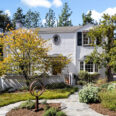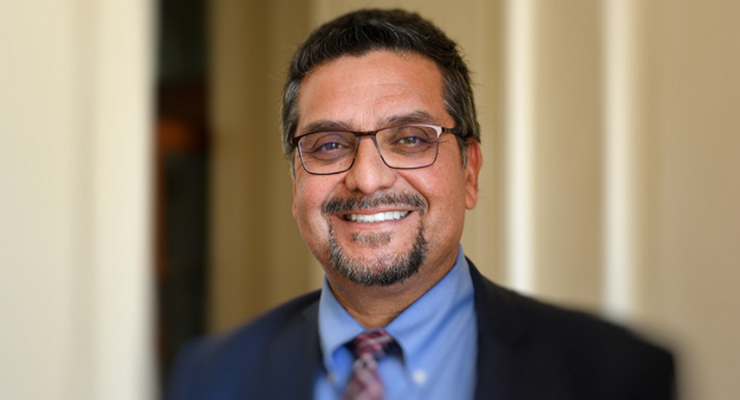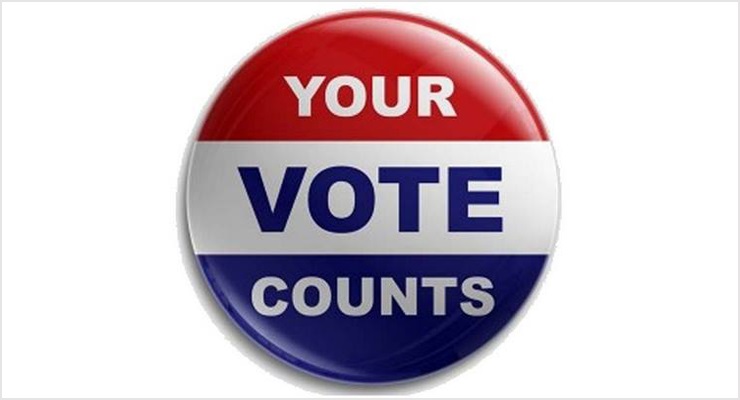
This is the last in a series of columns on 10 Grand Challenges to transform Pasadena’s future. Today’s column focuses on the need for local funding and an expanded Housing Authority to pursue creative approaches to affordable housing for all.
“All Pasadena residents have an equal right to live in decent, safe, and affordable housing in a suitable living environment for the long-term well-being and stability of themselves, their families, their neighborhoods, and their community. The housing vision for Pasadena is to maintain a socially and economically diverse community of homeowners and renters who are afforded this right.”
Unanimously adopted by the Pasadena City Council, this “right to housing” commitment is part of the Housing Element recently approved by the State of California. It is now legally binding, including plans to accommodate the construction of at least 9429 new housing units in our community – by 2029. Nearly 6,000 of them are supposed to be “affordable” (2747 for “very low income” households; 1662 for “low income”; and 1565 for “moderate.”)
That’s a tall order – but the need is clearly there. The Housing Element notes that as home prices have “soared,” Pasadena has shifted from a community with a majority of homeowners to one where 57% of residents are now renters. More than half of tenants must devote more than 30% of their incomes to keep a roof over their head. Thousands of Pasadena families spend more than half their income on rent. With 27,000 names on the City’s waiting list for “affordable housing” vouchers, it’s little wonder that 54% of Pasadena voters approved rent control in November’s election.
How to meet this urgent challenge? Pasadena is doing a number of things already:
- Under Pasadena’s long-standing “inclusionary zoning” requirements, 132 “affordable” units are set aside in new market rate units currently under construction.
- The City is helping finance the rehabilitation of 119 older rental unit and the construction of 318 new units in such projects as Pasadena Studios, Heritage Square South, Adept Walnut, Lincoln and Orange Grove, and the Salvation Army Hope Center.
- Last year, the City signed deals to waive property tax revenue in exchange for restricting 495 private apartment units to charging “moderate” income rents.
- Mayor Victor Gordo was appointed by the Council last week to serve as Pasadena’s member of the board creating a “Burbank-Glendale-Pasadena Regional Housing Trust Fund” which has been jumpstarted with a $23 million grant from the State.
- A pilot project to provide financing to homeowners to build rear units (“Accessory Dwelling Units” or ADUs) reserved for renting to Federal affordable housing vouchers (Section 8).
Those are promising initiatives, but will fall far short of the Housing Element’s ambitious goals of producing 6000 additional units of affordable housing.
What can be done?
The City has long had a “Housing Authority” with a small staff that locally administers the distribution of Federal housing vouchers (the one with the waiting list of 27,000). Prior to the abolition of redevelopment statewide in 2012, Pasadena had a much more ambitious program for helping finance affordable housing projects. What Pasadena needs now is a strengthened Housing Authority – with a secure source of local funding to supplement the grants available from the State and Federal governments.

Having been in public service for more than three decades, I understand limited funding resources. I’ve often retold the story of the British statesman who faced far more dire circumstances during the dark opening days of the Nazi Blitz in World War II. “We are out of money,” he told his colleagues in the War Cabinet. “We are going to have to think.”
The City’s adopted Budget this year notes, “The enhancement of existing funding sources will be critical to the Department of Housing’s capacity to provide affordable housing to the community.” Concerning the urgent need for shelter and permanent housing for Pasadena’s unhoused residents, the Budget states, “Although Pasadena continues to receive one-time increases in (homelessness) funding from the State, a reliable source of ongoing funding is needed to support high priority needs such as supportive services for and existing and new supportive housing programs and increasing shelter services.”
Yet the Council has avoided discussing where the “enhancement of existing funding” or “a reliable source of ongoing funding” is going to come from. The Housing Element promises to “investigate the most effective means available to generate funds locally to support the construction of affordable housing in Pasadena, such as but not limited to a residential property vacancy tax, real estate transaction fee, and commercial development linkage fee.” So far that isn’t happening.
All but one of those options require a vote of the people. To win such approval, the City will need an imaginative and credible plan for how to leverage new funds in creative ways. The public are understandably skeptical about the seemingly lavish costs for providing “affordable housing.” Which means Pasadena needs to explore all avenues for producing high quality housing at truly “affordable” cost.
That’s where an expanded Housing Authority can adapt successful models already working in other communities. In Atlanta, large corporations have invested more than $100 million of their portfolios in a non-profit community development organization that rehabs existing and builds new affordable housing in a neighborhood threatened by displacement and gentrification. Rochester, NY removed a section of downtown freeway, spawning new affordable housing, including supportive services for seniors and veterans. In Culver City, a transfer tax increase is funding new projects, including the redevelopment of an existing church site to include 78 new units of affordable housing. In Santa Monica, transfer tax revenue funds a program to keep low-income seniors from becoming homeless.
In Santa Clara County, former Chief Operating Officer Miguel Marquez (now Pasadena’s City Manager) supported a nearly $1 billion bond for affordable housing. “We are fully focused on our goal of ending family homelessness by 2025 and youth homelessness by 2027,” Marquez said last year. “We’ve invested heavily in expanding all of our housing programs to not only get families off the street but also to prevent them from falling into homelessness in the first place. Santa Clara County is a place where we take care of each other, and there are few things closer to this goal than keeping our families and youth safe and housed.”
There are countless other examples – and Pasadena could forge its own local solutions. Mayor Gordo’s Housing Task Force endorsed a local funding measure last year. The leaders of the faith-based Making Housing and Community Happen, Jill Shook and Anthony Manousos, are convening informal discussions of what shape a local funding measure might take. It’s time for the Council to participate in those discussions – and include the broader community as well.
Pasadena sees itself as an inclusive and compassionate community. With more than 500 unhoused residents and thousands of neighbors paying through the nose to continue to live here, the final Grand Challenge in this series is perhaps the most urgent – living up to the Council’s promise that “All Pasadena residents have an equal right to live in decent, safe, and affordable housing in a suitable living environment for the long-term well-being and stability of themselves, their families, their neighborhoods, and their community.”
Rick Cole is a current Pasadena Planning Commissioner and a former Mayor of Pasadena. He serves as Chief Deputy Controller for the City of Los Angeles.
See Also: Rick Cole: Ten Grand Challenges to Transform Pasadena’s Future – Pasadena Now past issues:
- Remove the concrete channel from the Arroyo: The beautiful valley running through our city is one of our greatest assets. Back in the Thirties, our default for handling periodic flooding was with engineering. We now know how to divert storm water to percolate back into the ground instead of flushing it out to sea. Removing the ugly channel would create a completely different feel to the lower Arroyo, Pasadena’s pre-eminent natural recreational gem
- Remove and reclaim the 710 Stub: Caltrans deliberately dug a huge hole and filled it with concrete to push traffic into residential neighborhoods in a failed attempt to force South Pasadena to surrender to the bulldozers. Now that the City of Pasadena has title to the property, we can eliminate this scar on the landscape and build parks, affordable housing and community assets to reknit the southern part of our city.
- Connect Old Pasadena to PCC with a streetcar: There is Federal funding to route a street car loop on Union and Green that would connect our historic core with the Playhouse District, South Lake and a campus with 30,000 students. It would link our greatest assets (Caltech would also be in walking distance) to the regional light rail stop at Memorial Park and make navigating between them easy and non-polluting, reducing traffic.
- Transform the Central Library into a 24/7 Learning Center: Life-long learning doesn’t just take place in formal schools — libraries have always been a place providing access to people of all ages and incomes to access learning. Books are just one form — but classes, maker spaces, speakers, conferences and activities could enliven the classic building which needs over $100 million in seismic upgrades which shouldn’t just be spent to put back books.
- Create an Affordable Housing Authority: The City, School District and PCC should partner to use all available public land for creating workforce, student and affordable housing. With State mandates to build 6000 units of affordable housing in Pasadena over the next eight years, the public sector should take the lead to ensure maximum benefits to our local residents.
- Replace outdated zoning with a new design code: Pasadena relies on a Design Commission to guide development of higher density apartments and condos — and the results are less than wonderful. The State now insists on “objective standards” — but Pasadena doesn’t have them for its high density development. Let’s make sure new development to provide needed housing is also compatible with our community’s high standards for design. The issue is not just how they look, but more importantly, how they function to compliment the neighborhoods around them.
- Individualize help for the homeless: Community Solutions, a nationwide program based on extensive research, advocates for a “by name” registry of those accessing public and non-profit services so unhoused individuals and families aren’t bounced around uncoordinated programs and agencies. Sharing data can ensure the homeless get the help — and housing — they need, quickly and humanely.
- Convert to carbon-free energy: Pasadena 100 is pushing our public utility to walk the walk of its environmentally-friendly talk by eliminating coal and natural gas from electric generation by 2035. With strong Federal support for renewable energy, it’s clearly doable — so why isn’t Pasadena leading?
- Establish car-free zones: The pandemic has transformed many streets around the world into pedestrian zones that now are full of life and people. Businesses and residents love it! Let’s start with weekends and shut down Colorado between Fair Oaks and Pasadena Avenue. Or South Lake between Del Mar and California? Or the Colorado Street Bridge. Nearly everyplace it’s been tried, including here in Southern California, it is quickly so popular it goes year-round.
Make Pasadena bike-friendly: Countries like Holland and cities from Davis to Paris used to be unsafe and unattractive to bicyclists. Skeptics doubted that people would bike — but when protected bike lanes connect where people want to go, the shift happened more quickly than anyone imagined. Biking is cheaper and healthier for individuals and the planet. Why does Pasadena lag cities in the region like Long Beach, Santa Monica and Culver City?


















